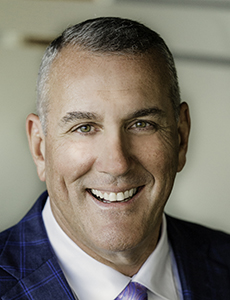Sponsored Content by myMatrixx
How to Choose the Right PBM to Move Your Business Forward

Prescription drugs are responsible for a significant chunk of workers’ compensation costs. Ensuring appropriate utilization of the right medications for the best value goes a long way in reducing expenses. That’s where a pharmacy benefit manager (PBM) comes in.
Today, however, PBMs go beyond prescription management. They are coming to the table with clinical expertise, advanced data and analytics, and regulatory savvy that can help employers maintain healthier, more productive workforces that ultimately move their businesses forward.
But choosing the right PBM partner is easier said than done. No two organizations offer the same services, solutions and tools. Employers must do their due diligence to ensure they get the value they are looking for over the long term.
“In the workers’ comp world, everything is custom, and you really have to start from that perspective,” said Mike Cirillo, president of myMatrixx. “There are a few key aspects buyers should investigate to ensure they are partnering with the right PBM for them.”
Cirillo identified three factors worth diving into:
1) Longevity and Reliability

Mike Cirillo, President of myMatrixx
The PBM sector has seen a flurry of activity driven by private equity.
“Since private equity came in, I think we’ve seen probably 30 to 40 PBMs come and go over the last 10 years as they’ve been consolidated or acquired. Typically, with an acquisition, you’re looking at a one-to-five-year lifespan of ownership and then it’s going to sell,” Cirillo said.
“So you have to ask yourself if there will be a change in ownership within the next few years, or is this organization going to be consistent? Will they be here when you need them?”
The same is true for startups, which have also grown more prevalent in the PBM space. While promises of innovation, efficiency and transparency are alluring, they mean little without balance sheet strength to back them up.
“There are some really great ideas coming from new startup companies, but again, you have to ask if they will be there for the long haul. Do they have the capital? Do they have the right financial balance sheet structure and support to be able to deliver on your needs and deliver the value that you’re looking for long-term?” Cirillo said.
Digging into a PBM’s financial health and sources of capital is critical to determine its staying power.
2) Pricing Structure
A PBM’s contractual agreements with pharmacies, physicians and drug manufacturers all determine what kind of savings are passed along to insureds. These agreements, however, can be complex and are not exactly laid out in plain terms for clients to parse through.
“There are many variables that determine cost beyond just the rate that is quoted,” Cirillo said.
Some specific factors buyers should look for include:
- Brand vs. generic definitions. No two companies will have the same brand name and generic medications on formulary. It’s worth knowing what options are available and understanding the impact on medication availability and cost.
- Rebate structure. How large are the rebates that a PBM receives from a drug manufacturer, and how much of that is passed on to payers? Are rebates factored into the PBM’s pricing?
- Network penetration. PBMs obtain discounts through contracts with pharmacies, but in some cases, a network could also include physician offices or third-party billers. “The goal is to be able to capture that prescription that’s outside the traditional retail or home delivery pharmacy,” Cirillo said. A large and varied network means more access to the medications that injured workers need at more affordable prices. Buyers should also ask what a PBM is doing to drive more prescriptions to in-network versus out-of-network providers. Is it taking a more hands-on or hands-off approach to contain costs? For those prescriptions that are out of network, do they have the processes, skills and tools to drive into network? The more in-network, the greater the value.
3) Data and Analytics Capabilities
“In my experience, the strongest PBMs have strong analytical capabilities and are able to drill down by state, by physician, by practice, by pharmacy, by injury type — you name it,” Cirillo said. “And it goes beyond benchmarking, which is looking at the past. We need to leverage data to see what’s ahead of us and work proactively.”
The real power of data lies in the ability to identify risk factors and cost drivers within a workers’ compensation program, and implement specific interventions that target those root causes. That’s where the biggest savings are realized. A PBM that acts as a partner in risk management will be able to identify the types of injuries where prescription costs are highest, the medications driving the highest costs, or the physician that is prescribing those high-cost drugs. This insight allows an employer or payer to gain control over their spend.
“If you don’t have the right data tools, you’re never going to be able to pinpoint the true cost drivers in a program and where the real risks are. And when you can’t identify where those opportunities are to intervene, your patient safety is going to suffer, which is just going to add time and expense to a claim,” Cirillo said.
The other benefit of technology is that it has allowed claims people to look at resourcing differently. Through integration with claims handling platforms, a PBM’s data can feed algorithms and automatic recommendation engines to help guide adjuster decisions and route claims to the appropriate experts without so much legwork.
“There’s a lot of opportunity to leverage technology to make that adjuster’s decision-making easier, or actually to take that decision off the adjuster altogether,” Cirillo said.
The Importance of a Service Mindset
While all of these factors matter, perhaps the most important characteristic a payer should look for in a PBM is a service mindset. Is it their mission to help a client’s business grow? Are they transparent? Is someone always available to answer questions? This is what separates service providers from true business partners.
“Service is really the piece that pulls it all together,” Cirillo said. “At myMatrixx, we have trained individuals manning the phones 24/7, 365. We also have live pharmacists available to help as well. So when an injured worker is in trouble or they can’t get their medication, we make sure we have the right resources that can get to that pharmacy or the adjuster and get that medication approved. Even in this day and age of technology and AI and chatbots, human customer service is a huge part of being able to deliver on a client’s goals and objectives. None of your technology is going to matter if you can’t get your customer what they need when they need it.”
Good customer service ultimately helps to keep claims on track, which keeps duration in check, keeps claims out of litigation, and gets workers back on the job faster, resulting in increased savings and productivity for payers and employers.
myMatrixx also leverages a strong network to deliver deep discounts to clients and keeps a staff of highly trained clinical experts to ensure prescriptions are appropriate and obtained at the highest value. This, along with a variety of service offerings and technology solutions, allows the organization to deliver on all the potential that a strong PBM should offer.
To learn more, visit https://www.mymatrixx.com/.
This article was produced by the R&I Brand Studio, a unit of the advertising department of Risk & Insurance, in collaboration with myMatrixx. The editorial staff of Risk & Insurance had no role in its preparation.










